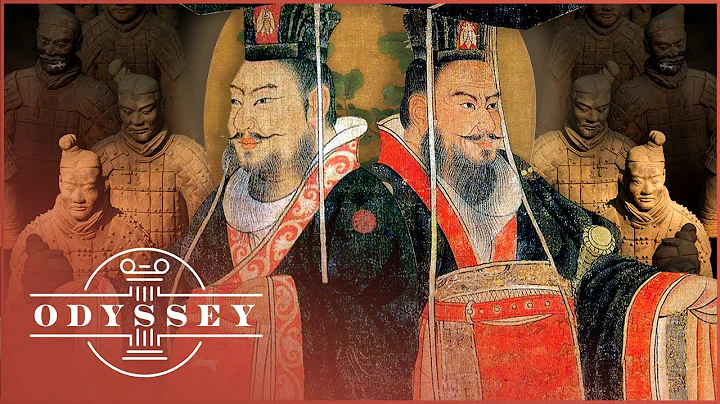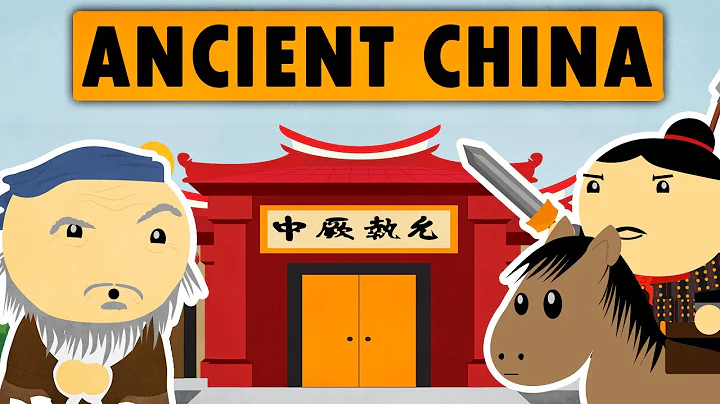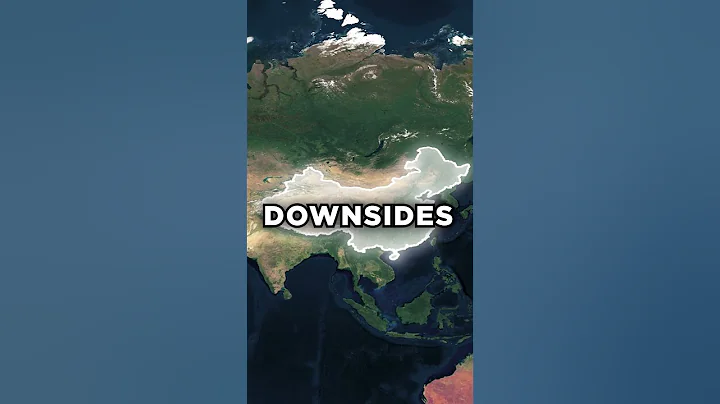China is an ancient civilization with a long history. Every corner of this land has rich historical heritage waiting for us to explore.
On the vast land of China, there are now 23 provinces, 5 autonomous regions, 4 municipalities, and 2 special administrative regions, a total of 34 provincial-level administrative regions. Today we will introduce the history of the names of 23 provinces and 5 autonomous regions. origin.

Vertical version of China map
Historical names of provincial administrative regions
The provincial administrative units of the Qin Dynasty were "counties", and the world was divided into thirty-six counties;
The Han Dynasty established thirteen states in the country, so the provincial administrative units It is a "state";
The Tang Dynasty divided the world into ten roads based on the situation of mountains and rivers. Later, it was increased to fifteen roads, so the provincial administrative unit was a "dao";
The Song Dynasty divided the world into fifteen roads, and the number was constantly adjusted. Provinces The administrative units at the provincial level are "roads";
The Yuan Dynasty points The world is divided into ten Xing Zhongshu provinces , and the provincial administrative units are "provinces", which is also the source of our current name "province";
Ming Dynasty points The world is divided into the Thirteen Chengxuan Chief Envoys , and the provincial administrative units are "Chief Envoys";
Qing Dynasty The world is divided into eighteen provinces, and the provincial administrative units are "provinces".
The number of provincial administrative units in each dynasty has been adjusted over time. There are also some administrative regions of the same level, such as the Western Region Protectorate during the Han and Tang Dynasties.
East China
Jiangsu VS Anhui
In the early Qing Dynasty, Jiangsu and Anhui both belonged to Jiangnan Province. During the Kangxi period, they were split into Jiangsu Province and Anhui Province. "Jiangsu" was taken from " Jiangning " and " Suzhou ", and "Anhui" "Taken from " Anqing " and " Huizhou ".
Jiangning is the city of Nanjing, and Huizhou is the current Huangshan City. In fact, the provincial capital of Anhui was originally supposed to be in Anqing, but after the founding of the People's Republic of China, it was changed to Hefei City. Seeing that Hefei is developing better and better, are the people of Anqing a little resentful? .

The Jiangnan style represented by Suzhou gardens
Zhejiang
is named after the Qiantang River in the territory. Because of the winding Qiantang River, it was formerly known as Zhejiang.
In the Tang Dynasty, Zhejiang (Qiantang River) was used as the boundary, and the Jiedushi of Zhejiang West Road and the Jiedushi of Zhejiang East Road were divided into two. However, at this time, "Zhejiang" was a geographical concept, and it belonged to Jiangnan East Road in terms of administrative division.
first appeared as an administrative concept in the Ming Dynasty. In the early Ming Dynasty, the Zhejiang Chief Envoy Department was established, and it was continued as Zhejiang Province in the Qing Dynasty.
Jiangxi
The Yangtze River rushes down from the Qinghai-Tibet Plateau . When it reaches Jiujiang, it suddenly changes its east-west flow direction to north-south direction. The ancients called the area from Jiujiang to Nanjing Jiangdong and Jiangxi, also known as Jiangyou and Jiang left .
"No face to see the elders of Jiangdong", "Jiangzuo Meilang", etc. all refer to this area.
During the Tang Dynasty, Jiangnan West Road was established. In the Song Dynasty, Jiangnan West Road was established. In the Yuan Dynasty, Jiangxi Province was established. This was the first time that "Jiangxi" appeared as a provincial administrative concept. Jiangxi Province was continued to be established in the Ming and Qing Dynasties.
South China
Guangdong VS Guangxi
Emperor Wu of the Han Dynasty established Guangxin County in the Guangdong and Guangxi regions, which means "when the land of Guangdong was first opened, it was appropriate to spread the trust in Guangdong", which is now between Fengkai County, Guangdong and Cangwu County, Guangxi.
In the Song Dynasty, Guangxin was used as the dividing line and Guangnan East Road and Guangnan West Road were established, referred to as Guangdong Road and Guangxi Road.
The Ming Dynasty established the Guangdong Chief Envoys Department and the Guangxi Chief Envoys Department, and the Qing Dynasty established Guangdong and Guangxi Provinces.

The Pearl River is the spiritual link between Guangdong and Guangxi
Fujian
It is named after "Fuzhou" and "Jianzhou" in the territory. Jianzhou is now Jianou, with a history of 1,800 years. It is one of the first four counties established in Fujian. However, it is now only a county-level city, which is far from the provincial capital Fuzhou, which is regrettable.
Fujian Road was established in the Northern Song Dynasty. "Fujian" appeared for the first time as an administrative concept. It governed Fuzhou, Quanzhou , Zhangzhou , Tingzhou , Jianzhou, Nanjianzhou and Xinghua, Shaowu There are a total of 8 places in the army, so it is called "Eight Min". The Ming Dynasty established the Fujian Chief Envoy Department, and the Qing Dynasty established Fujian Province.
Yunnan
During the reign of Emperor Wu of the Han Dynasty, Yunnan and other places came under the rule of the Han Dynasty. The central government established 24 counties here, one of which was named Yunnan County, named after "South of Caiyun".
Yunnan Xingzhongshu Province was established in the Yuan Dynasty. This was the first time that "Yunnan" appeared as a provincial administrative concept. The name "Yunnan" was used in the Ming and Qing dynasties, and the Yunnan County within its territory was renamed Xiangyun County to avoid confusion.
Guizhou
During the Song Dynasty, the indigenous people in Guizhou surrendered, and the imperial court issued an imperial edict to commend them. One of the sentences included the sentence "Guizhou is the only one, far away from the wilderness", hence the name "Guizhou".
However, as an administrative concept, it appeared as the Guizhou Chief Envoy Office established in the Ming Dynasty, and the Guizhou Province was established in the Qing Dynasty.
Southwest
Sichuan
was called Bashu in ancient times, and was Yizhou during the Han Dynasty. The Tang Dynasty established the Jiannan Road here, and the famous wine Jiannanchun got its name from it.
Later, Jiannan Road was divided into Jiannan Dongchuan Road and Jiannan Xichuan Road, collectively known as the East and West Sichuan.
In the Song Dynasty, Yizhou Road, Zizhou Road, Lizhou Road, and Kuizhou Road were established in Sichuan, collectively known as the Sichuan-Shaanxi Fourth Road, or Sichuan for short.
The province of Sichuan was established in the Yuan Dynasty and was used in the Ming and Qing Dynasties.
Tibet
Before the Yuan Dynasty, it was called Tubo. The Yuan Dynasty began to be included in the rule of the Central Plains Dynasty and established the management of Xuanzhengyuan. In the Ming Dynasty, it was called Wusizang, and in the Qing Dynasty it was called Weizang. It was later named Tibet, and Tibetan Affairs was established Minister.
Tibet is ruled by the Panchen Lama and the Dalai Lama. The Tibetan people call their residence "Wusizang" or "Weizang". The Tibetan pronunciation of "Wei" is similar to the pronunciation of "Western" in Manchu. The Qing Dynasty gradually evolved into "Weizang". Tibet".

Tibetan symbol
Central China
Hunan VS Hubei
The Tang Dynasty established the Hunan Observation Mission, responsible for inspections in Jiangnan West Road, Qianzhong Road and other places.
In the Song Dynasty, Dongting Lake was used as the boundary, and Jinghu South Road and JingHubei Road were established, referred to as Hunan Road and Hubei Road.
The Yuan Dynasty established Huguang Province, including parts of the current Guangdong, Guangdong, Hunan and Guizhou regions.
The Ming Dynasty continued to establish the Huguang Chief Envoy Department, but only Hunan and Hubei were under its jurisdiction.
During the Kangxi period of the Qing Dynasty, it was split into Hunan Province and Hubei Province.
Central Plains
Henan VS Hebei
The two are bounded by the Yellow River. The south of the Yellow River is Henan and the north of the Yellow River is Hebei.
Henan County was established in the Han Dynasty, and "Henan" changed from a geographical concept to an administrative concept.
Henan Road was established in the Tang Dynasty, and "Henan" became a provincial administrative region.
Kaifeng, the capital of the Song Dynasty, was in Henan, so Henan was renamed Jingji Road.
The Yuan Dynasty was established as Henan Jiangbei Province, that is, a large area south of the Yellow River and north of the Yangtze River.
The Ming Dynasty established the Henan Chief Envoy Department, and the Qing Dynasty established Henan Province.
Hebei appeared relatively late as an administrative concept, and Hebei Province was established in the Tang Dynasty.
Beijing was the capital of the Ming Dynasty, and the Hebei region was directly under the central government, namely North Zhili. It was Zhili Province in the Qing Dynasty, and was restored to Hebei Province during the Republic of China.
Shandong VS Shanxi
The two are bounded by Taihang Mountain, Shandong is to the east of Taihang Mountain, and Shanxi is to the west of Taihang Mountain.
Jingdong Road was established in Shandong during the Song Dynasty. After the Jin people occupied it, it was changed to Shandong Road.
The Yuan Dynasty belonged to the Jiangbei Province of Henan, the Ming Dynasty established the Shandong Chief Envoy Department, and the Qing Dynasty established Shandong Province.
Before the Yuan Dynasty, because Shanxi was located east of the word "ji" in the Yellow River, it was called Hedong, such as Hedong Road in the Tang Dynasty and Hedong Road in the Song Dynasty.
The Yuan Dynasty established Shanxi Hedong Road, which was under the jurisdiction of Zhongshu Province.
In the Ming Dynasty, the Shanxi Chief Envoy Department was established, and "Shanxi" became a provincial administrative concept, which has been used to this day.

Weiwei Taihang
Northwest
Shaanxi
The Emperor of Zhou took Shaanxi Province (Shaanxian County, Henan Province) as the boundary. The east was called Shaanxi East and was assigned to the jurisdiction of Zhou Gong. The west was called Shaanxi and was assigned to the jurisdiction of Zhao Gong. At this time "Shaanxi" is a geographical concept.
Shaanxi Road was established in the Song Dynasty, Shaanxi Province was established in the Yuan Dynasty, Shaanxi Chief Envoy was established in the Ming Dynasty, and Shaanxi Province was established in the Qing Dynasty.
Gansu
is named after Ganzhou (Zhangye) and Suzhou (Jiuquan) within the territory.
Before the Yuan Dynasty, the Gansu region was called Longyou, Ganliang, etc. The Yuan Dynasty established Gansu Road and was affiliated with Ningxia Province. Later, Ningxia Province was directly changed to Gansu Province.
In the Ming Dynasty, the provinces of Gansu and Shaanxi were merged into the Shaanxi Chief Envoy Department, and the Qing Dynasty split them again into Shaanxi Province and Gansu Province.
Xinjiang
Before the Qing Dynasty, Xinjiang was collectively known as the Western Regions, under the jurisdiction of special departments such as the Western Regions Protectorate.
Qianlong regarded himself as the "Old Man of Perfection", and unified the newly expanded territory of the empire as Xinjiang, including parts of current Xinjiang, parts of Yunnan, parts of Guizhou, etc.
In the late Qing Dynasty, Zuo Zongtang Zuo Gong regained Xinjiang, and wrote to Cixi, urging the establishment of provincial jurisdiction in Xinjiang. The memorial mentioned that "other tribes were forced to leave, and the homeland was newly returned", so it was named Xinjiang.
Qinghai
is named after the Qinghai Lake within the territory. Like Tibet, the Yuan Dynasty was governed by the Xuanzheng Yuan, the Ming Dynasty was managed by Duogan Dusi, the Qing Dynasty established the Qinghai Affairs Minister, and the Republic of China established a province named "Qinghai".

Beautiful Qinghai Lake
Ningxia
Party people established political power here, and the country was named "Daxia". It was quite difficult for Mongolia to conquer Xixia . Genghis Khan died during the conquest of Xixia. After the establishment of the Yuan Dynasty, the province of Ningxia was specially established, which meant that "the land of Xixia will always be peaceful and peaceful". Later it was renamed Gansu Province.
During the Ming and Qing Dynasties, no separate province was established. After the founding of the People's Republic of China, Ningxia Province was established, and in 1957 it was changed to the Ningxia Autonomous Region.
Northeast
Liaoning
is named after the Liaohe River in the territory, which means "Eternal Peace in the Liaohe River Basin".
In the Tang Dynasty, it belonged to Hebei Province, in the Yuan Dynasty, Liaoyang Province was established, and in the Ming Dynasty, Liaodong Dusi was established.
In the Qing Dynasty, as the land of Longxing, it was under the jurisdiction of General Shengjing. In the late Qing Dynasty, it was renamed Fengtian Mansion. This is the origin of the "Fengtian Warlord".
During the Republic of China, Liaoning Province was established and is still used today.
Jilin
is named after Jilin City within the territory.
The Qing Dynasty established the jurisdiction of General Shengjing, General Ningguta and General Heilongjiang outside the Pass.
General Ningguta's residence was originally in Ningguta City, and later Jilin City was built as his residence. General Ningguta was renamed Jilin General, and Jilin Province was established during the reign of Guangxu.
Heilongjiang
is named after Heilongjiang within the territory. The overall history of
is the same as that of Jilin. It was first governed by the Heilongjiang generals. Heilongjiang Province was established during the Guangxu period and is still in use today.
Inner Mongolia
In the early Qing Dynasty, Monan Mongolia, which was surrendered earlier, was called Inner Zhasak Mongolia, and Mongolia which was surrendered later was called Outer Zhasak Mongolia, but this is different from Inner Mongolia in the modern sense.
After the independence of Outer Mongolia, the various Mongolian ministries belonging to China were called Inner Mongolia.
Two Islands
Taiwan
It is named after the "Taiwowan" community of the Siraya people in Anping, Tainan.
Before the Ming Dynasty, it was called Liuqiu. During the Wanli period of the Ming Dynasty, the name "Taiwan" appeared for the first time.
Kangxi of the Qing Dynasty took back Taiwan from Zheng Chenggong's descendants and established the Taiwan Prefecture, which was under the jurisdiction of Fujian Province.
In the late Qing Dynasty, foreign powers attacked from the sea. In order to strengthen coastal defense, Taiwan was established as a separate province and governors were stationed under its jurisdiction.

Treasure Island Taiwan
Hainan
The youngest province in China, it was established as a separate province for the first time in 1988.
In ancient times, Leizhou was called Haibei , Qiongzhou was called Hainan. Hainan Road was established in the Yuan Dynasty and belonged to Huguang Province.
In fact, each place name is not as bland as described in the article. Behind them is the development process of the Chinese nation, from unification to division, and then from division to unification, from the loss of the homeland to the restoration of the world, every step They are all the blood, tears and glory of the Chinese people.
Therefore, I have made this great ambition to set foot in every province in China in my lifetime.



















![Novel Coronavirus (2019 nCoV 🦠 Outbreak 😷) [Update # 1] COVID-19 - DayDayNews](https://i.ytimg.com/vi/UubQNkK0wy0/hqdefault.jpg?sqp=-oaymwEcCOADEI4CSFXyq4qpAw4IARUAAIhCGAFwAcABBg==&rs=AOn4CLAP_5pfwgWKcsH3mMEPnP5Dv-4WEQ)

